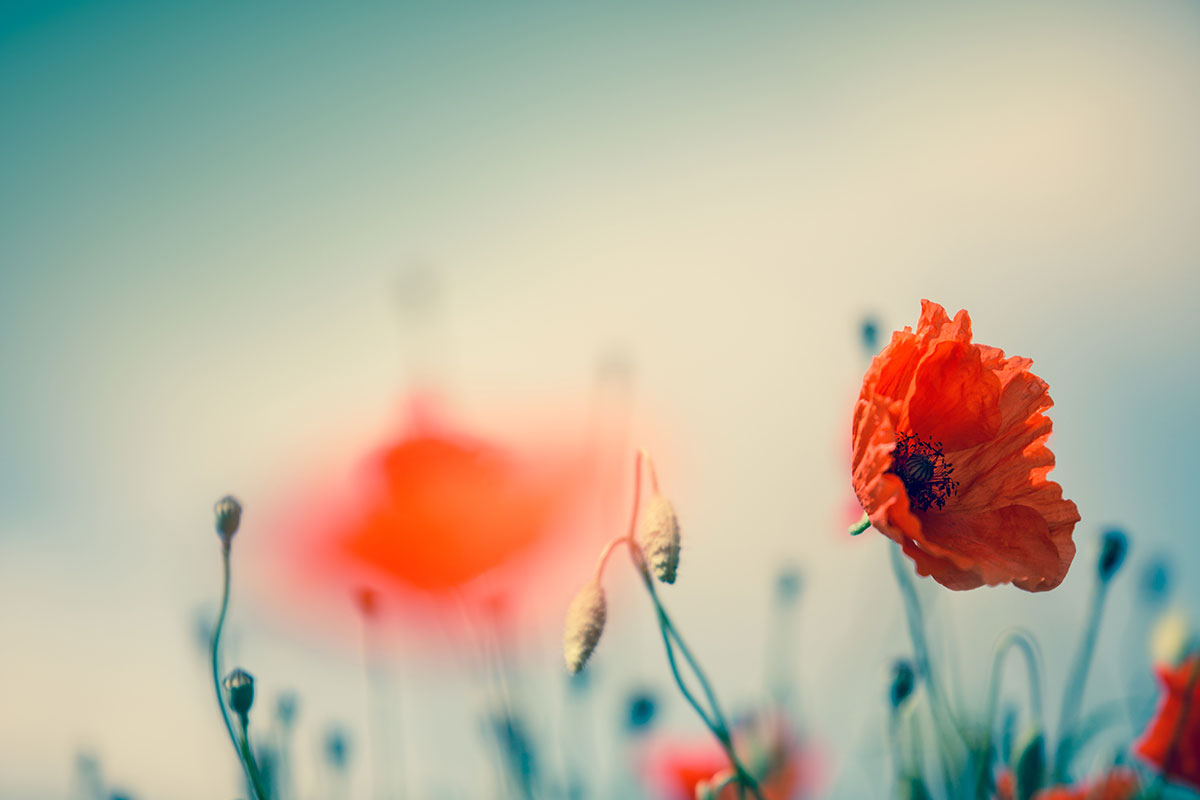
Depth of Field
How To Add Depth to Your Photos
Depth of field and experimenting with the foreground and background is an essential technique in photography. We will show you what factors influence the depth of field and how you can use them.
Colloquially, the term 'depth of sharpness' has become more common than 'depth of field', but linguistically they have the same meaning. In technical literature, the term 'depth of field' - standardised in 1970 - is mostly used. This defines the focus range in which an object is sharply in focus in the camera's optical system. On the picture above it is very easy to see that only a small area, namely the poppy, is really sharp, whereas both the foreground and background are blurred.
For detailed and portrait shots, the depth of field is primarily used as a means of drawing the attention to the main subject. With landscape shots, on the other hand, as much of the picture as possible should be in focus. Depth of field depends on the distance and the camera format, but even more so on the aperture and the focal distance.
Camera Format
The format is determined by your camera. The size of the sensor and/or of the film influences the focal distance and thus also the depth of field. Smartphones and small cameras have even smaller sensors than 35mm. Professionals therefore tend to prefer to use medium or even large cameras.
Focal Distance
The greater the focal distance of a lens, the smaller its depth of field and vice versa. A wide-angle lens accordingly offers more sharpness in the entire picture than a telezoom or the 85 millimetre lens - which is popular for portrait photography.
The Distance
If you increase the distance between you and your subject, the focus range becomes larger. The closer you move to your subject, the smaller the depth of field becomes. If you use a compact camera in portrait or macro mode, you can use these to produce a blurring effect in your images.

Example: the subject is five metres in front of the camera and the aperture remains the same at f5.6, so the depth of field is only a few centimetres long with a focal distance of 105 millimetres. With a focal distance of 28 millimetres, by contrast, the range that appears sharply in focus is already more between one metre in front and two metres behind the focussed subject.
The Aperture
The further you close the aperture, the greater the depth of field becomes. At the same time, the overall sharpness also increases. Above a certain aperture, which varies from lens to lens, the overall sharpness decreases again, while the depth of field continues to increase. Therefore, the higher the f-number (smaller aperture opening), the greater the depth of field.
As a result, the amount of light striking the sensor decreases when the aperture is closed. You will need to, if necessary, increase the exposure time. With increasing exposure time it is recommended to also use a tripod in order to avoid any camera shake.

Focus
Although what you focus on in the picture only has an influence on depth of field if you switch between a close object and a distant object, manual focussing already has an influence on your image design.
Depth of Field Preview Button
In order to be able to judge the depth of field correctly when focussing, many cameras have a depth of field preview button. Generally, the depth of field is not usually correctly shown in the viewfinder or on the display. If you do not have this option, you can simply check the depth of field by taking some test shots.
Hyperfocal Distance
In simple terms, this is the distance from which everything behind the subject is captured sharply at a certain focal length and aperture. In the field of landscape photography, even if there is enough light, photos are usually taken with a tripod in order to be able to control the aperture completely independently of the exposure time.
Depth of Field with a Smartphone Camera
You can also achieve this effect with a smartphone even though most smartphones lack depth of field due to their small sensors and lenses. It is a good idea to get very close to the subject and focus on it manually or to add the missing three-dimensionality or depth effect afterwards. Many apps, such as AfterFokus Pro“ for Android and iOS, make it possible to add blurring to photos afterwards.
Tip
Individually design your own wall decorations with your favourite photos
Have you used depth of field when taking photos and created some real masterpieces? Turn your favourite photos into individually designed wall decorations for your home and display your works of art.
